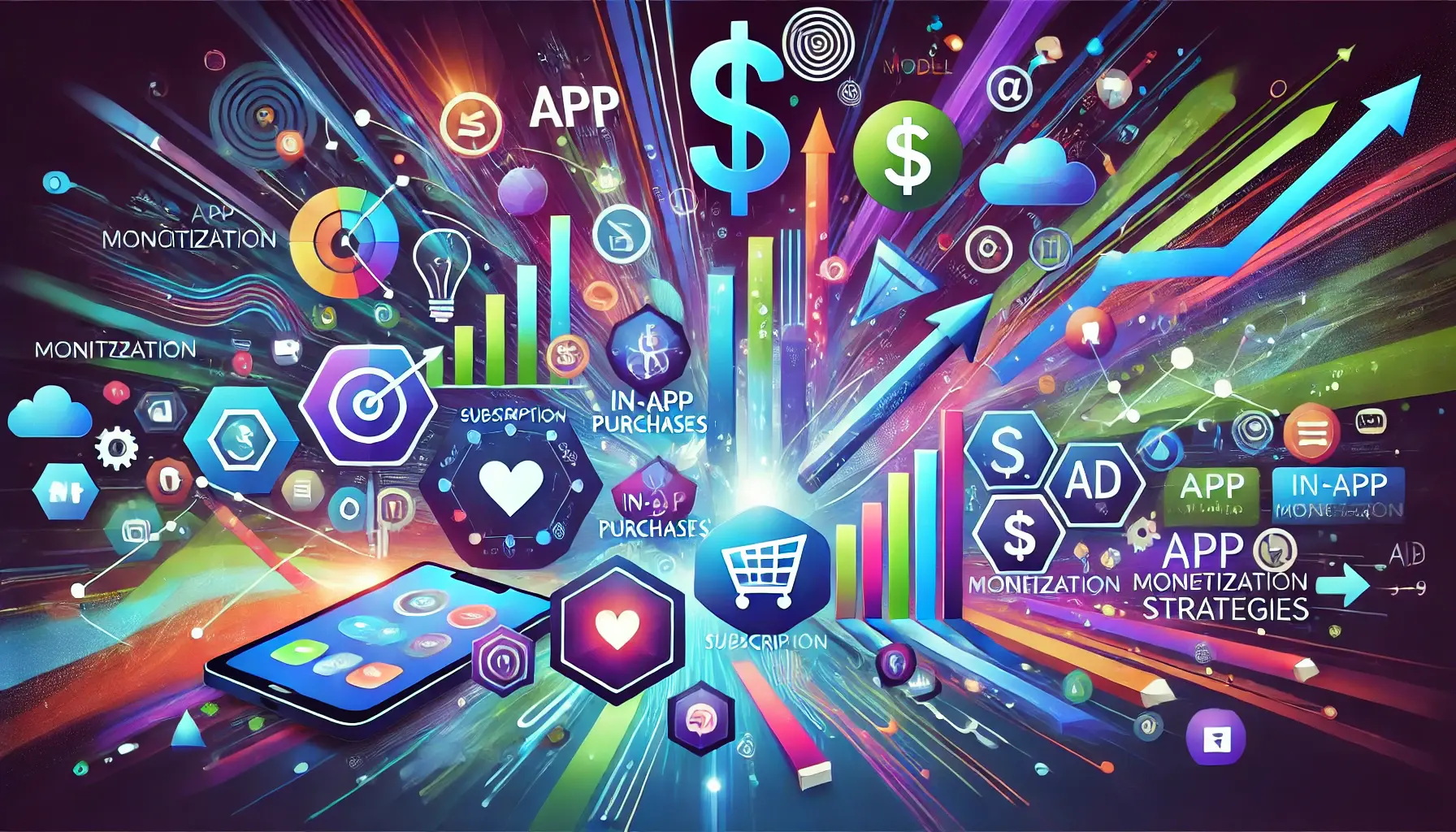With the digital marketplace evolving rapidly, in-app purchases (IAPs) have become a cornerstone for revenue generation in mobile applications.
This article delves into the intricacies of optimizing in-app purchases, a strategy crucial for app developers and marketers aiming to enhance their app’s financial performance.
The focus on in-app purchases, particularly within the App Store Optimization (ASO) sphere, is more than just a trend; it’s a necessity in today’s app economy.
The integration of in-app purchases offers a dual benefit: it enhances user engagement by providing additional value and simultaneously opens up a steady revenue stream for developers.
However, the challenge lies in executing this strategy effectively.
This requires a deep understanding of user behavior, market trends, and the subtle art of balancing monetization with user experience.
- Understanding the Basics of In-App Purchases
- Effective Pricing Strategies for In-App Purchases
- Maximizing User Engagement and Retention
- Leveraging Analytics and Data for In-App Purchase Optimization
- Innovative Marketing Tactics for Promoting In-App Purchases
- Emphasizing Continuous Improvement and Updates
- Enhancing In-App Purchases with Customer Support and Service
- Conclusion: Mastering In-App Purchase Optimization
- In-App Purchases Optimization: Essential FAQs
Understanding the Basics of In-App Purchases
In-app purchases have transformed the way users interact with mobile applications.
Unlike traditional upfront payment models, IAPs allow users to download apps for free and pay for additional features, content, or services within the app.
This model not only makes the app more accessible to a wider audience but also provides a platform for continuous revenue generation.
The types of in-app purchases vary, ranging from one-time purchases, such as unlocking a full game level, to recurring subscriptions, like premium content access.
Each type serves a different purpose and caters to various user needs, making it essential for developers to understand their target audience to optimize these offerings effectively.
Key Strategies for Optimizing In-App Purchases
To optimize in-app purchases, developers must focus on several key strategies.
First, ensuring the value proposition of the purchase is clear and compelling is crucial.
Users are more likely to invest in an app if they perceive real value in the purchase.
Additionally, pricing strategies need to be carefully considered.
This involves not only setting the right price point but also offering attractive bundles or discounts that can encourage bulk purchases or long-term subscriptions.
Another critical aspect is the timing of presenting these purchases.
Introducing them too early can deter users, while too late can result in missed opportunities.
Finding the right balance and timing can significantly impact the effectiveness of in-app purchases.
Effective in-app purchase optimization requires a deep understanding of user behavior and market trends, combined with a strategic approach to pricing and presentation.
Effective Pricing Strategies for In-App Purchases
One of the most critical aspects of in-app purchase optimization is establishing an effective pricing strategy.
The right price can significantly influence a user’s decision to make a purchase.
Factors to consider include the perceived value of the feature or content, the target audience’s spending capacity, and competitive pricing within the app market.
It’s essential to strike a balance between profitability and affordability.
Overpricing can lead to reduced sales, while underpricing might undervalue the app’s offerings.
A/B testing different price points can be an effective way to find the sweet spot that maximizes revenue without deterring users.
Implementing Tiered Pricing Models
Tiered pricing models are an excellent way to cater to a diverse user base with varying spending capacities and needs.
This approach involves offering different levels of in-app purchases, such as basic, premium, and deluxe packages, each providing incremental value.
Here’s how to structure them:
- Basic Package: Offers essential features at a lower price, suitable for users who need minimal additional functionality.
- Premium Package: Includes more features or content than the basic package, aimed at users looking for more value.
- Deluxe Package: Provides the most comprehensive set of features or content, targeted at users willing to pay a premium for the best experience.
This model not only accommodates different user segments but also encourages users to upgrade their purchases over time.
Offering Bundles and Discounts
Bundles and discounts are powerful tools for boosting in-app purchase sales.
Bundling multiple items or features at a discounted rate can encourage users to spend more than they would on individual purchases.
Seasonal discounts or limited-time offers can also create a sense of urgency, prompting users to make purchases they might have otherwise delayed or foregone.
Effective bundling and discount strategies include:
- Combining complementary items or features into a single package.
- Offering time-limited discounts during holidays or special events.
- Providing exclusive offers to first-time buyers or loyal users.
Consider experimenting with different bundles and discounts to see what resonates best with your user base, and use data-driven insights to refine your approach.
Maximizing User Engagement and Retention
Engaging users and retaining them over time is crucial for the success of in-app purchases.
This involves not only attracting users to the app but also keeping them interested and invested in the app’s offerings.
A well-thought-out strategy for user engagement and retention can significantly boost in-app purchase revenues.
Personalization and User Experience
Personalization plays a key role in enhancing user engagement.
By tailoring the in-app experience to individual preferences and behaviors, apps can create a more relevant and compelling experience for each user.
This can include personalized recommendations, custom-tailored content, or unique offers based on user activity and purchase history.
Improving the overall user experience is also vital.
This means ensuring the app is intuitive, user-friendly, and free from bugs or glitches.
A positive user experience increases the likelihood of users exploring in-app purchase options.
Incentivizing In-App Purchases
Incentives can be a powerful tool to encourage in-app purchases.
These can take various forms, such as:
- Rewards for first-time purchases or loyalty bonuses for frequent buyers.
- Exclusive access to premium content or features for subscribers.
- Special events or challenges that offer unique rewards purchasable within the app.
Such incentives not only motivate users to make purchases but also add an element of excitement and exclusivity to the app experience.
Effective Communication Strategies
Communicating with users about in-app purchases is essential.
This includes clear messaging about the benefits and value of the purchases, as well as transparency regarding pricing and terms.
Effective communication can be achieved through:
- Push notifications that inform users about new or limited-time offers.
- In-app messages that guide users through the purchasing process.
- Email campaigns that keep users informed about updates and special deals.
It’s important to strike a balance in communication frequency and content to avoid overwhelming or annoying users.
Remember, the key to maximizing user engagement and retention is to provide a personalized, user-friendly experience, coupled with strategic incentives and effective communication.
Leveraging Analytics and Data for In-App Purchase Optimization
Utilizing analytics and data is fundamental in fine-tuning in-app purchase strategies.
By analyzing user behavior and purchase patterns, developers can gain valuable insights that drive informed decisions and targeted strategies for boosting in-app purchase revenues.
Understanding User Behavior through Analytics
Analytics tools provide a wealth of information about how users interact with an app.
Key metrics to focus on include user engagement rates, purchase frequencies, and the effectiveness of promotional campaigns.
Understanding these metrics helps in identifying what drives users to make purchases and what might be hindering them.
For instance, if data shows a high engagement rate but low conversion to purchases, it might indicate that users are interested in the app’s offerings but find the pricing or the purchase process unfavorable.
Segmenting Users for Targeted Strategies
User segmentation is another critical aspect of data-driven optimization.
By categorizing users based on behavior, preferences, or demographic factors, developers can create more personalized and effective in-app purchase offers.
Segmentation can be based on criteria such as:
- User spending habits (high spenders vs. occasional buyers).
- Engagement levels (frequent users vs. casual users).
- Geographical location or language preferences.
This targeted approach ensures that offers are relevant and appealing to each user segment, increasing the likelihood of purchases.
Tracking and Analyzing Purchase Trends
Monitoring and analyzing in-app purchase trends is essential for understanding what works and what doesn’t.
This includes tracking which items or features are most popular, seasonal variations in purchase behavior, and the impact of pricing changes or promotional activities.
By keeping a close eye on these trends, developers can adapt their strategies in real-time, capitalizing on successful tactics and modifying those that are less effective.
Effective use of analytics and data is key to understanding user behavior, segmenting users for targeted strategies, and tracking purchase trends for continuous optimization of in-app purchases.
Innovative Marketing Tactics for Promoting In-App Purchases
Effective marketing is crucial for promoting in-app purchases.
Innovative and strategic marketing tactics can significantly increase visibility and attractiveness of in-app offerings, leading to higher conversion rates and revenue.
Here are some key marketing approaches to consider:
Utilizing Social Media Platforms
Social media platforms offer a vast arena for promoting in-app purchases.
By leveraging these platforms, developers can reach a broader audience and create buzz around their app’s offerings.
Key strategies include:
- Creating engaging content that highlights the benefits of in-app purchases.
- Running targeted ad campaigns to reach potential users based on their interests and behaviors.
- Engaging with the community through posts, comments, and direct messaging to build a loyal user base.
Collaborating with Influencers
Influencer marketing can be a powerful tool for app promotion.
Collaborating with influencers who have a significant following in your app’s niche can drive awareness and credibility.
This approach involves:
- Identifying influencers whose audience aligns with your target users.
- Working with influencers to create authentic content that showcases the value of your in-app purchases.
- Leveraging influencers’ reach to drive traffic and conversions.
Creating Engaging In-App Events
Hosting in-app events is an excellent way to engage existing users and attract new ones.
These events can be designed to showcase new features or special offers related to in-app purchases.
Effective in-app events might include:
- Limited-time challenges or competitions with exclusive rewards.
- Special discounts or bundles available only during the event.
- Interactive sessions or live streams within the app to engage users.
These events not only promote in-app purchases but also enhance the overall user experience, making the app more engaging and enjoyable.
Innovative marketing tactics, including social media engagement, influencer collaborations, and engaging in-app events, are key to effectively promoting in-app purchases and boosting revenue.
Emphasizing Continuous Improvement and Updates
For sustained success in the competitive app market, continuous improvement and regular updates are essential.
These efforts not only keep the app relevant and appealing but also signal to users that the developers are committed to providing a high-quality experience.
This section explores how ongoing improvements and updates can impact in-app purchase optimization.
Regularly Updating App Features and Content
Regular updates keep an app fresh and engaging.
This can involve adding new features, refining existing ones, or introducing new content that enhances the user experience.
Key considerations for updates include:
- Responding to user feedback and suggestions to improve the app.
- Staying abreast of technological advancements and integrating them into the app.
- Ensuring compatibility with the latest operating system updates and devices.
These updates not only improve the app’s functionality but also provide opportunities to introduce new in-app purchases or highlight existing ones.
Optimizing User Interface and User Experience
The user interface (UI) and user experience (UX) are critical components of any app.
Continuous refinement in these areas can lead to increased user satisfaction and higher in-app purchase rates.
This involves:
- Streamlining navigation and making the app more intuitive.
- Enhancing the aesthetic appeal of the app to make it more engaging.
- Reducing any friction in the purchase process to make transactions smoother.
Improvements in UI/UX not only retain existing users but also attract new ones, thereby expanding the potential customer base for in-app purchases.
Gathering and Implementing User Feedback
User feedback is a goldmine of insights for app improvement.
Actively seeking and implementing user feedback demonstrates a commitment to user satisfaction and can lead to better in-app purchase strategies.
Effective ways to gather feedback include:
- Surveys and questionnaires within the app or via email.
- Monitoring reviews and ratings on app stores.
- Engaging with users on social media and forums.
By understanding user needs and preferences, developers can make informed decisions about new features, pricing strategies, and overall app improvements.
Continuous improvement and regular updates, focusing on app features, UI/UX, and user feedback, are crucial for maintaining a competitive edge and optimizing in-app purchase strategies.
Enhancing In-App Purchases with Customer Support and Service
Effective customer support and service play a pivotal role in the success of in-app purchases.
Providing timely and helpful support can significantly enhance user satisfaction and trust, leading to increased sales and loyalty.
This section explores how customer support and service can be optimized to improve in-app purchase experiences.
Offering Responsive and Helpful Support
Responsive customer support is crucial for addressing user concerns and queries related to in-app purchases.
This includes:
- Providing multiple channels for support, such as in-app chat, email, and social media.
- Ensuring quick response times to user inquiries.
- Offering solutions and assistance for issues related to transactions, access to purchased features, and other related concerns.
Effective support not only resolves issues but also builds user confidence in the app and its purchase mechanisms.
Creating a Knowledge Base and FAQs
A comprehensive knowledge base and frequently asked questions (FAQs) section can empower users to find answers to common queries independently.
This should include:
- Information on how to make purchases, manage subscriptions, and access purchased content.
- Guidelines on troubleshooting common issues related to in-app purchases.
- Details about refund policies, privacy, and security related to transactions.
Such resources reduce the dependency on direct support and enhance the overall user experience by providing immediate assistance.
Collecting Feedback for Service Improvement
Collecting feedback specifically about the support and service experience is essential for continuous improvement.
This can be done through:
- Post-support surveys to gauge user satisfaction and gather suggestions.
- Monitoring and analyzing support interaction trends to identify areas for improvement.
- Encouraging users to share their support experiences and recommendations.
Actively using this feedback to refine support strategies can lead to more effective and user-friendly support systems, further enhancing the in-app purchase experience.
Robust customer support and service, including responsive support, a comprehensive knowledge base, and feedback-driven improvements, are key to enhancing the in-app purchase experience and driving revenue growth.
Conclusion: Mastering In-App Purchase Optimization
In the dynamic world of mobile applications, mastering the art of in-app purchase optimization is essential for maximizing revenue and ensuring long-term success.
This comprehensive exploration has highlighted various strategies and best practices that developers and marketers can employ to enhance their app’s financial performance through effective in-app purchases.
Key Takeaways for In-App Purchase Success
From setting the right pricing strategies to leveraging analytics for informed decision-making, each aspect plays a crucial role in the overall optimization process.
Personalizing user experiences, engaging marketing tactics, continuous app improvement, and robust customer support are not just individual strategies but integral components of a holistic approach to in-app purchase optimization.
Implementing these strategies requires a deep understanding of user behavior, market trends, and technological advancements.
The goal is to create a seamless, engaging, and valuable experience for users, encouraging them to invest in the app’s offerings.
Future Trends and Evolving Strategies
As the app market continues to evolve, staying ahead of the curve in terms of trends and user expectations will be crucial.
Developers and marketers must remain adaptable, continuously refining their strategies based on user feedback and market changes.
The future of in-app purchases is likely to see more personalized, user-centric approaches, driven by advanced analytics and innovative marketing techniques.
- Emphasis on AI and machine learning for personalized user experiences.
- Greater integration of AR/VR features to enhance app engagement.
- Increased focus on security and privacy in transaction processes.
In conclusion, optimizing in-app purchases is a multifaceted endeavor that requires a blend of strategic planning, user-centric design, and continuous adaptation.
By focusing on these key areas, developers and marketers can significantly boost their app’s revenue, ensuring both user satisfaction and business success.
Boost your mobile app's success with our guaranteed App Store Optimization (ASO) service. Leave it to the experts!
In-App Purchases Optimization: Essential FAQs
Delving into the world of in-app purchases optimization raises several questions. Here are some frequently asked questions to provide deeper insights into this crucial aspect of app monetization.
Optimizing in-app purchases enhances user experience, increases revenue, and improves overall app engagement and retention rates.
Personalization tailors the user experience, making in-app purchases more relevant and appealing, thus boosting conversion rates.
User feedback helps refine in-app offerings, ensuring they meet user needs and preferences, leading to higher satisfaction and sales.
Yes, effective pricing strategies, like tiered models and discounts, can significantly influence user purchase decisions and revenue.
Strong customer support ensures user issues are promptly addressed, enhancing trust and likelihood of making in-app purchases.
What is the impact of analytics on in-app purchase optimization?
[/title][desc]Analytics pro










